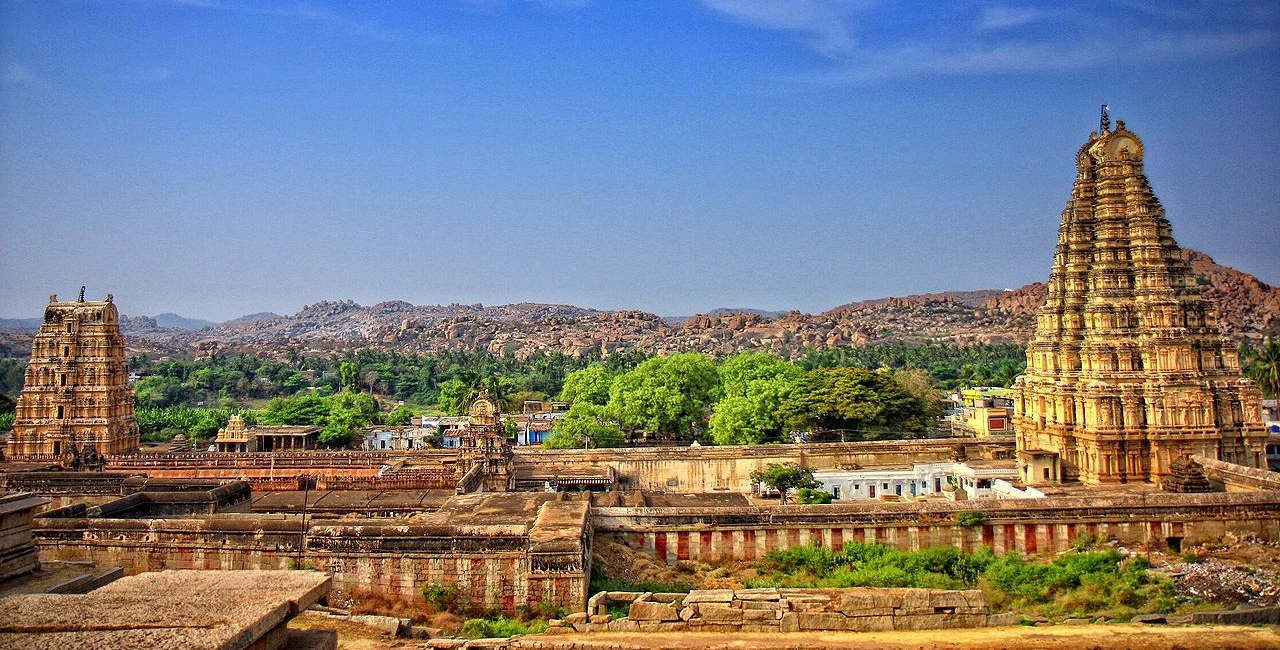Hampi, a UNESCO World Heritage site located in the southern Indian state of Karnataka, is a place where history, architecture, and mythology intertwine to create a landscape of awe and wonder. Once the flourishing capital of the Vijayanagara Empire, Hampi is now a vast expanse of ruins that tells the story of a glorious past. With its stunning temples, ancient marketplaces, and massive boulders that dot the landscape, Hampi is a destination that draws history enthusiasts, architecture buffs, and spiritual seekers from all over the world.
Historical Significance
Hampi’s history dates back to the 14th century when it was established as the capital of the Vijayanagara Empire, one of the most powerful and prosperous empires in South India. Under the rule of kings like Harihara and Bukka Raya, the city became a hub of trade, culture, and art, attracting merchants and scholars from far and wide. At its zenith, Hampi was one of the largest and wealthiest cities in the world, with a population of over half a million people.
The city’s prosperity was, however, short-lived. In 1565, Hampi fell to the Deccan Sultanates after the Battle of Talikota. The city was ransacked and left in ruins, marking the end of the Vijayanagara Empire. Despite this devastation, the ruins of Hampi have survived the test of time, offering a glimpse into the grandeur of a bygone era.
Architectural Marvels
Hampi is renowned for its unique architecture, which reflects a blend of Dravidian, Indo-Islamic, and Vijayanagara styles. The city is spread over an area of 4,100 hectares and is home to more than 1,600 surviving monuments, including temples, palaces, pavilions, water structures, and royal complexes.
One of the most iconic structures in Hampi is the Virupaksha Temple, dedicated to Lord Shiva. The temple is still in active worship and is known for its towering gopuram (gateway), intricate carvings, and the annual chariot festival, which attracts thousands of devotees. The temple complex also features a 7th-century shrine that predates the Vijayanagara Empire, making it one of the oldest functioning temples in India.
Another architectural marvel is the Vittala Temple, famous for its musical pillars and the Stone Chariot, which has become a symbol of Hampi. The temple’s main hall is supported by pillars that produce musical notes when struck, a testament to the advanced engineering skills of the time. The Stone Chariot, carved out of a single block of granite, stands as a masterpiece of Vijayanagara architecture and artistry.
The Lotus Mahal and Queen’s Bath are other notable structures that showcase the architectural brilliance of Hampi. The Lotus Mahal, with its delicate arches and balconies, reflects the Indo-Islamic influence, while the Queen’s Bath, a royal bathing complex, highlights the luxurious lifestyle of the Vijayanagara rulers.
The Boulders and Landscape
One of the most striking features of Hampi is its unique landscape, dominated by massive boulders that seem to be precariously balanced on top of one another. These boulders are not only a natural wonder but also played a significant role in the city’s architecture. Many of the temples and structures in Hampi are carved out of or constructed using these massive rocks, blending seamlessly with the natural surroundings.
The boulder-strewn hills also provide excellent vantage points for panoramic views of the Hampi landscape. The Matanga Hill is one such spot, offering breathtaking views of the sunrise and sunset over the ruins. The Hemakuta Hill is another vantage point that provides a bird’s eye view of the Virupaksha Temple and the surrounding area.
Spiritual and Mythological Significance
Hampi is not just a place of historical and architectural importance but also holds deep spiritual and mythological significance. According to Hindu mythology, Hampi is believed to be Kishkindha, the monkey kingdom mentioned in the epic Ramayana. It is said that Lord Rama met Hanuman, the monkey god, and his army at this very site during his quest to rescue Sita. The Anjaneya Hill, believed to be the birthplace of Hanuman, is a popular pilgrimage site in Hampi.
The Pampa Sarovar, a sacred pond mentioned in the Ramayana, is another important religious site. It is believed to be the place where Pampa, a form of Goddess Parvati, meditated to win the love of Lord Shiva.
Hampi Today
Today, Hampi is a blend of the ancient and the modern. While the ruins remain the main attraction, the town itself has a laid-back vibe with guesthouses, cafes, and shops catering to the steady stream of tourists. The annual Hampi Utsav, a cultural festival celebrating the heritage of the Vijayanagara Empire, brings the ruins to life with music, dance, and art performances.
Hampi is not just a destination but an experience that transports visitors back in time. Whether you are exploring the majestic temples, climbing the boulder hills, or simply soaking in the spiritual atmosphere, Hampi offers a journey through history, architecture, and mythology that is both enriching and unforgettable.


0 Comment